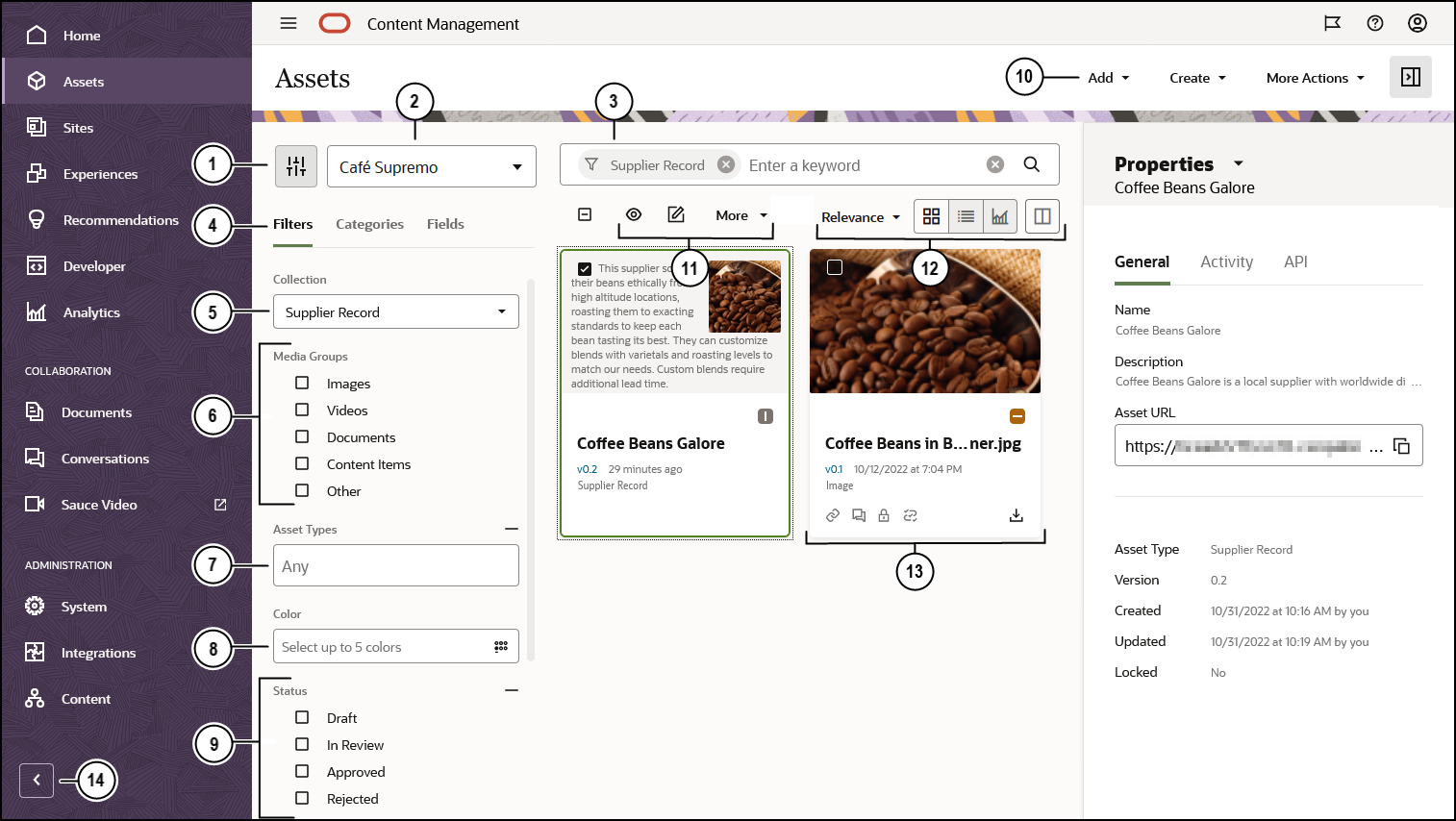15 Get to Know the Business Assets Page
Your Assets view is where you manage all the business documents and content items. The features available on the Assets page differ depending on whether you are viewing a business asset repository or a digital asset repository. Digital asset repositories support publishing and translation. This topic describes the Assets page for a business asset repository.

To get started, click Assets in the left navigation menu.
| Callout | Description |
|---|---|
| 1 | Click |
| 2 | Select the repository to use from the drop-down list next to the filter icon. |
| 3 | Search for assets using tags or keywords. If smart content is enabled on the repository, after you enter a search term, you'll see recommended keywords under the search box. Click a keyword to add it to your search. |
| 4 | By default, you see filters for filtering the assets in the repository by collection, media group, asset type, and status. You might see additional filter tabs:
|
| 5 | Filter by collection. If you choose a specific collection, you will see only those content items and business documents that are in that collection. If you leave this option set to All, you’ll see all the assets in the repository you chose to use. |
| 6 | Filter by media group, for example, images, documents, or content items. |
| 7 | Filter by the type of asset. You see all the asset types available in the selected repository. |
| 8 | Filter by color. If smart content is enabled on the repository, you can filter images by color, selecting up to five colors. |
| 9 | Filter by status. You can filter by the following status types: approval, workflow, lock, or collection. |
| 10 | The menu at the top of the page lists the actions you can take in the repository:
|
| 11 | After you select at least one asset, the actions bar above the assets shows the actions you can take on the selected assets. Depending on what you select, different actions will be available. If you don't see all the actions, click More.
|
| 12 | You can sort the assets in your view by relevance, name, or by the last date they were updated. You can also toggle between grid view ( |
| 13 | Each asset tile shows details about the asset. You see the following information:
|
| 14 | Click the arrow to expand navigation to show text for the menu options in the navigation menu or collapse it to show an icon-only navigation menu. Collapsing the menu gives you more room for viewing assets in the content area. |